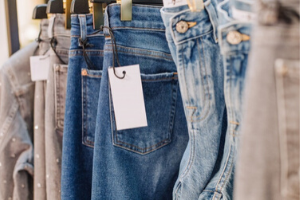
Retal post Coronavirus: ¿What will the physical stores be like after the crisis?
Physical stores have probably been the businesses hardest hit by the Coronavirus crisis (Covid-19), except for supermarkets, pharmacies, and kiosks. Clothing stores have been forced to close and cede all prominence to their digital platforms for the duration of the confinement. But what will happen once this crisis is overcome and life returns to the streets?
A return to normality will not be easy for anyone, not even for large conglomerates, since they will have to face the same challenges as small merchants: implementing security measures in their establishments. The capacity will be very limited, there will be no testers and the use of technology will be more in-person. In addition, during the first months and while the threat of rebound lasts, it is expected that the premises must have a document that certifies it as a “safe place”.
A limited capacity will be established
As it is being carried out in supermarkets, the control of capacity in stores will be a necessary and practically obligatory measure. Either through counting tools, tracking, heat maps or even manually, a maximum allowed capacity will be established depending on the surface of the premises to ensure that the meter of separation between clients is maintained.
Fitting Room
The points of sale will be disinfected frequently, however, the fitting rooms are possibly the most problematic area, especially in the early stages of the reopening. These are very small spaces where it is difficult to keep the distance, which could favor contagion. Although in the beginning there was talk of disinfecting testers every time a customer uses them, in practice it is not feasible. Although it is true that the option of eliminating the testers in the long term is not considered, it may be that in the first months their use is prohibited.
Clothes
The World Health Organization (WHO) still does not know for sure how long Covid-19 can survive outside the human body, although its latest studies estimate that the virus can live up to nine days on surfaces such as metal, glass or plastic.

How long does Covid-19 last in clothing?
For example, it is recommended that when we return home from the supermarket, we toss the laundry in to wash to remove any particulate residue. If those are the measures to take into account with our own clothes, how can we guarantee the safety of the clothes in a store that hundreds of customers pass through every day? This is the point where the big chains still differ: customers touch clothes all the time and it is unfeasible, as with testers, to disinfect them every time that happens.
There is also another challenge: returns. This challenge affects both online and physical stores: clothes will come to consumers’ homes, they will try on clothes and if they do not like them and want to change them, what protocols will be followed? As of today, the measures taken by the big brands have been to extend the terms for returning the garments up to 60 days, but it is not very clear what they do with the clothes.
Queue management and payments
While the use of testers may be restricted for a time, the queue to pay is inevitable. The solution? Follow the measures carried out by supermarkets: mark the ground with lines to guarantee the minimum distance between customers.
When paying, the use of the card is recommended over that of cash, but the new measures go through the collection through mobile devices, avoiding any type of contact.
Conclusion
However, we will have to wait for the confinement to end to see the real measures taken by the companies. At the moment, and to save the season, many clothing businesses are offering great discounts on their websites and free shipping with no minimum purchase.
We are sure that the largest retail company in the world, INDITEX, is already working on action protocols for its stores after this crisis and at KEYPLAN we will be vigilant, since we are sure that its actions will be a reference model for other stores in consumption.






0 comments
Write a comment